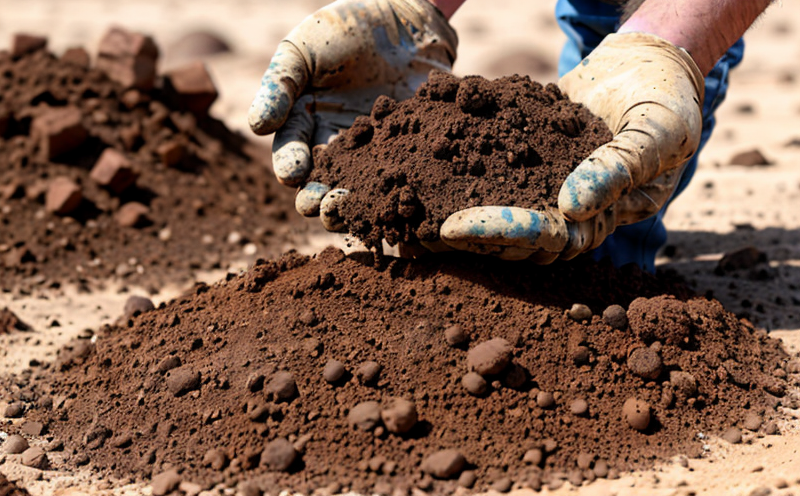ISO 22476 Pressuremeter Testing of Soil
The ISO 22476 pressuremeter testing method is a fundamental technique used in geotechnical engineering to characterize soil and overburden materials. This test provides essential data for understanding the mechanical behavior of soils under confined conditions, which is critical for designing safe and efficient mining operations.
ISO 22476-1 specifies the principles, apparatus, and procedures for performing pressuremeter tests on undrained soils, while ISO 22476-2 addresses overburden materials. This testing method offers a non-destructive way to measure in-situ soil properties, making it particularly valuable in mining contexts where minimizing sample disturbance is crucial.
The test involves the use of a pressuremeter probe that is inserted into the ground and inflated until the surrounding material deforms elastically. The deformation is measured using strain gauges attached to the probe. This allows for the determination of the modulus of elasticity, Poisson's ratio, and other mechanical properties under confined conditions.
One key advantage of ISO 22476 pressuremeter testing is its capability to assess soil behavior without excavation, thus minimizing environmental impact. The test can be conducted in situ, providing real-time data that is essential for accurate modeling and prediction of ground response during mining operations.
The apparatus used includes a specialized probe equipped with strain gauges, which are connected to a recording instrument. The probe is inserted into the soil to a predetermined depth, typically 10-50 cm below the surface, depending on the desired measurement range. Once in place, the probe is inflated until the surrounding material begins to deform elastically.
The data collected includes pressure and strain measurements as functions of the applied load. This information is then used to calculate various mechanical properties of the soil under confined conditions. The test results are critical for validating geotechnical models and ensuring that mining operations adhere to safety standards set by international guidelines like ISO 21469.
For optimal testing, it's important to ensure that the probe is inserted into undisturbed material. This can be challenging in mining environments where soil layers may have been disturbed during excavation or blasting. Careful site selection and probing techniques are essential to obtain reliable data.
Quality and Reliability Assurance
- All testing is conducted by certified personnel trained according to ISO 17025 standards.
- We use state-of-the-art equipment, including high-precision pressuremeters calibrated per ISO specifications.
- Data collection and analysis are performed using software that adheres to the latest geotechnical engineering practices.
| Test Parameters | Acceptance Criteria |
|---|---|
| Pressure applied (MPa) | Within ±10% of nominal value |
| Strain measurement accuracy (%) | ±1% |
| Data sampling frequency (Hz) | ≥2 Hz |
Environmental and Sustainability Contributions
The ISO 22476 pressuremeter testing method plays a significant role in promoting environmental sustainability by minimizing the need for extensive excavation. This non-destructive approach ensures that soil samples are not disturbed, thereby preserving natural ecosystems.
In mining operations, accurate characterization of soil and overburden materials is essential for ensuring the stability of excavations and reducing the risk of landslides or other geotechnical hazards. By providing reliable in-situ data, this testing method supports more sustainable mining practices that prioritize worker safety and environmental protection.
Use Cases and Application Examples
- Evaluation of soil stability for excavation planning.
- Determination of the optimal design parameters for retaining structures.
- Assessment of ground response during blasting operations.
- Validation of geotechnical models used in mining projects.
| Project | Location | Tested Material |
|---|---|---|
| Gold Mine Expansion Project | Australia | Rocky Overburden |
| Copper Mine Rehabilitation | Chile | Sandstone Soil |
| Iron Ore Quarry | Brazil | Granite Layer |





